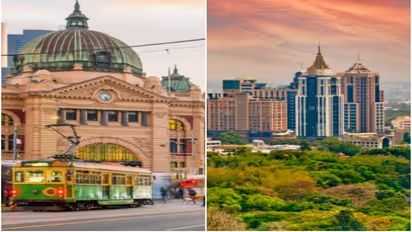
According to studies, a number of well-known towns across the globe are facing an unprecedented threat of their drinking water supply running out, which is indicative of a wider issue with water scarcity.
Though water covers most of Earth's surface, freshwater makes up only 3 percent of the planet's surface. More than one billion people do not always have access to clean water, and 2.7 billion of them experience scarcity for at least one month of the year.
Forecasts endorsed by the United Nations indicate that human activity, population increase, and climate change would cause a 40% deficit in the world's freshwater supply by 2030.
These eight well-known cities face the imminent threat of a shortage of potable water:
1. Bengaluru:
About half of Bengaluru's drinking water is lost to wastewater, and 85% of the lakes in the city are only fit for industrial or irrigation use. The issue is exacerbated by the country's rapid population increase, which is predicted to reach 20 million by 2031. An incapacity to efficiently manage precipitation, outdated infrastructure, and restricted access to the primary water source in the periphery all contribute to the issue of the water crisis.
2. Melbourne:
Melbourne had already experienced a terrible catastrophe in 1997, amid the worst drought in ten years. Even though the city has since recovered, massive deforestation throughout the state of Victoria poses a new threat. The catchments of nearby woodlands hold the majority of Melbourne's concentrated supply. As a result, the city faces a serious risk from deforestation, which might completely cut off its water supply.
3. Istanbul:
The Turkish government's official data show that the country is currently under water stress. Local experts warn that by 2030, there might be a shortage of water due to this circumstance. Densely populated areas, like Istanbul, which is home to 14 million people, have recently begun to experience shortages during the dry months. The city's reservoir levels had dropped to fewer than 30 percent of their capacity by the beginning of 2014.
4. Cape Town:
This city in South Africa is particularly notable for being among the most famous places experiencing serious water scarcity. When supply dams were full to about 14% in 2017 and 2018, the emergency scenario reached its apex. The current levels are approximately 50%, but this is still insufficient, particularly as the dry season draws near.
5. Cairo:
The Nile is facing difficulties, despite its historical significance in the rise of a significant global civilization. Even though the Nile provides 97% of Egypt's water, the amount of untreated domestic and agricultural waste entering it is rising. Egypt ranks highly among lower-middle-income countries when it comes to the number of deaths caused by water pollution, according to data from the World Health Organization. By 2025, the UN predicts that the nation will have severe water shortages.